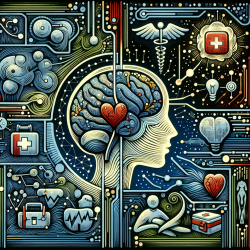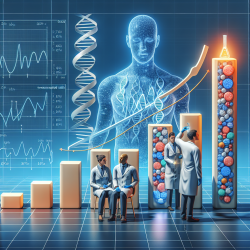Introduction
In the ever-evolving field of healthcare, the integration of technology and data-driven decision-making is transforming the way practitioners diagnose and treat conditions. A recent study titled Use of deep artificial neural networks to identify stroke during triage via subtle changes in circulating cell counts explores the potential of machine learning in enhancing stroke diagnosis. This blog delves into the implications of this research for practitioners, particularly in the context of emergency medicine, and encourages further exploration and implementation of these findings.
The Power of Machine Learning in Stroke Diagnosis
Stroke is a critical medical condition where timely diagnosis is paramount. The study conducted by O’Connell et al. (2022) investigates the use of deep artificial neural networks to identify stroke during triage by analyzing subtle changes in circulating cell counts. This approach leverages data from routine complete blood counts (CBC) with differential, a common laboratory test, to improve diagnostic accuracy.
The research highlights that individual cell counts, such as neutrophils and lymphocytes, show significant differences between stroke patients and stroke mimics. However, when combined using a neural network model, these data points significantly enhance diagnostic performance. This model outperforms traditional symptom-based tools like the Cincinnati Prehospital Stroke Scale (CPSS) and the National Institutes of Health Stroke Scale (NIHSS).
Implications for Practitioners
For practitioners, particularly those in emergency medicine, the findings of this study offer a promising avenue to improve stroke diagnosis. By integrating machine learning models into clinical practice, practitioners can make more informed triage decisions, especially in settings where advanced imaging techniques or neurological expertise are not readily available.
Implementing such models could also lead to the development of automated stroke alert systems. These systems can electronically flag patients with a high probability of stroke, facilitating timely intervention and reducing the risk of misdiagnosis.
Encouraging Further Research and Implementation
While the study provides a strong foundation, further research is needed to refine and validate these models. Practitioners are encouraged to engage in collaborative research efforts to explore the integration of additional data points, such as platelet and red blood cell mean volume, which could enhance the model's accuracy.
Moreover, exploring different machine learning algorithms and neural network architectures could yield even better diagnostic performance. As technology continues to advance, the potential for these models to revolutionize stroke diagnosis and improve patient outcomes is immense.
Conclusion
The integration of machine learning into stroke diagnosis represents a significant step forward in emergency medicine. By leveraging data-driven insights, practitioners can enhance their diagnostic capabilities and ultimately improve patient outcomes. As we continue to explore and implement these technologies, the future of stroke diagnosis looks promising.
To read the original research paper, please follow this link: Use of deep artificial neural networks to identify stroke during triage via subtle changes in circulating cell counts.










